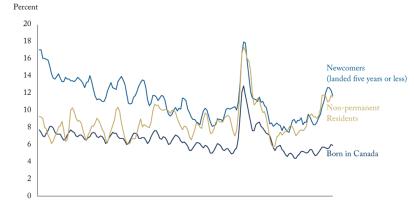This Graphic Intelligence breaks out the various components of the total cost of new single-detached homes in Canada’s six largest Census Metropolitan Areas (CMAs).
A recent C.D. Howe Institute publication calculates the total construction cost using three components: the physical cost of construction (which includes labour and materials), an assumed amount of developer profit, and a portion for an assumed land cost. Previous studies have shown that in a competitive market with no barriers to new entrants or access to land that land costs are about 25 percent of the total construction costs and that the gross margins of developers are around 17 percent.
Statistics Canada reports the construction cost of homes using permit issuance data from municipal governments. The C.D. Howe Institute report assumes that over a full economic cycle, about the ten-year period from 2011-2021, that the average return to developers should approximate that with free entry.
The difference between the average end user price for a new single-detached home, over the whole period of 2011-2021, and the average estimated total construction costs is what the C.D. Howe Institute report estimates as the barriers to supply. These barriers to constructing new single-detached homes include government regulations but also other potential market dysfunctions. These barriers manifest in prices of land over-and-above the assumed 25 percent share of construction costs in markets without land supply constraints.
Barriers to supply are a relatively small share (less than 10 percent) of total end-prices in the Ottawa, Montreal, and Edmonton areas. However, they now represent a major share in the Calgary and Toronto areas (around 30 percent of total costs) and are a significant share of total costs in the Vancouver CMA at around 50 percent of total costs. Over the 2011-2021 period, the market price of a single-detached home in the Vancouver CMA was nearly $1.3 million more than the all-in assumed cost to build.
Increased housing supply in cities facing barriers to supply can decrease the cost of housing. Increased housing density is one key tool that governments should consider, for example, to boost housing supply.





